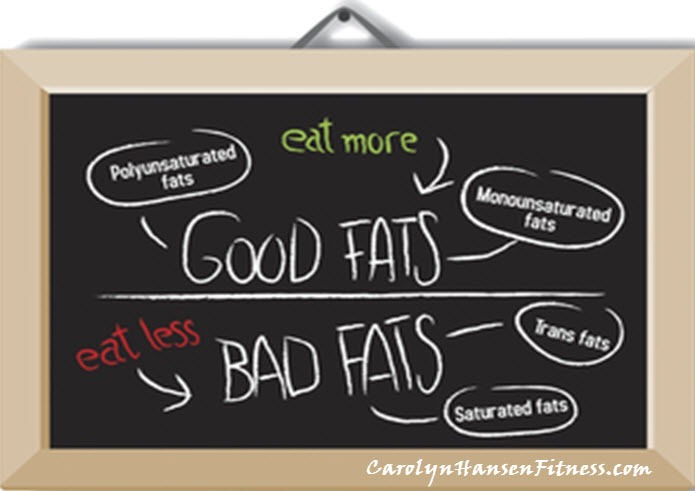
Although nutritionists and doctors alike have been preaching the benefits of a low-fat diet as one of the keys to managing cholesterol, losing weight and preventing future health issues, it’s really about what types of fat you eat…not the amount that counts.
The body needs fat. However…
Bad fats such as trans-fats and saturated fats have given a bad name to all fats but fat isn’t always the bad guy when it comes to disease and weight gain.
Truth is, eating fat can be heart-healthy when you pick the right fat. In fact in order for your body to function at peak performance, your body needs some fat…the healthy kind. If you try and avoid all fat you risk not getting enough fat-soluble vitamins and essential fatty acids.
To truly understand the difference between good and bad fats it’s important to know the major types of fats we’re dealing with.
Bad Fats include:
Trans-fats
Saturated fats
Healthier dietary fat includes:
Monounsaturated fats
Polyunsaturated fats
Omega-3 fatty acids (a type of polyunsaturated fat)
Trans-fats and saturated fats are bad because they increase the risk of disease and elevate cholesterol levels and play havoc with your weight. Good fats on the other hand protect your heart and your overall health.
In fact, good fats like omega-3 fats (fish is by far the best source of omega-3 fatty acids) are essential to your body physically, mentally and emotionally. Omega-3 fatty acids are polyunsaturated fat and are proving to be especially beneficial. Getting more omega-3’s in your diet can help to sharpen memory, protect against dementia, balance mood and battle fatigue.
Healthy fats are far more satiating than refined and processed carbohydrates and a healthy diet should include at least 50-70 percent healthy fats.
Healthy fats do not include things like vegetable oils that are often marketed as being “healthy.” These man-made, refined and processed vegetable oils they want to label as “healthy” are actually loaded with unhealthy omega 6-fats that mess with your fat storing-fat burning hormones.
Fructose along with the wrong types of carbohydrates such as grains (that break down into sugar once in the body) lead to weight gain and eventually obesity. Other conditions such as weight-loss resistance are also the result of eating the wrong types of carbohydrates. The key is to begin replacing grains, sugars and lost carbohydrates with healthy fats.
There are many readily available sources of healthy fats that you can include in your diet, here’s a few examples…
Healthy Fat Choices
Olives and olive oil – Not for high temperature cooking but perfect for cold dishes
Coconuts – All forms of coconut…shredded, dried, fresh and flour for cooking and baking. Coconut oil or butter is good for high temperature cooking
Avocados –
Butter – From grass fed cows
Raw nuts – All raw nuts not roasted
Seeds – Chia, flaxseed, sunflower, sesame and pumpkin seeds
Eggs – Free range
Meat – Grass fed
When focusing on replacing bad fats with healthy ones, a good place to start is to eliminate the trans-fats in your diet because no amount of trans-fats is healthy. They all contribute to major health issues ranging from heart disease to cancer.
The answer is not cutting fat out of our diets…it’s learning to make wise healthy choices in regards to which fats we eat as we begin replacing bad damaging fats that are currently in our diets with ones that promote health and well-being.
If you truly want to to support your energy levels, build resistance to disease and perform your daily activities with ease, you need to take command of your diet and daily eating habits.
“Reclaim Your Longevity” can help you do just that…
For more tools and resources from Carolyn Hansen to assist you in attaining your health and fitness goals and achieving the success you desire in life, please visit:
Isn’t it time to throw away all the false statements you’ve accepted about dieting and exercise and learn what it really takes to stay healthy and fit long into your senior years?

